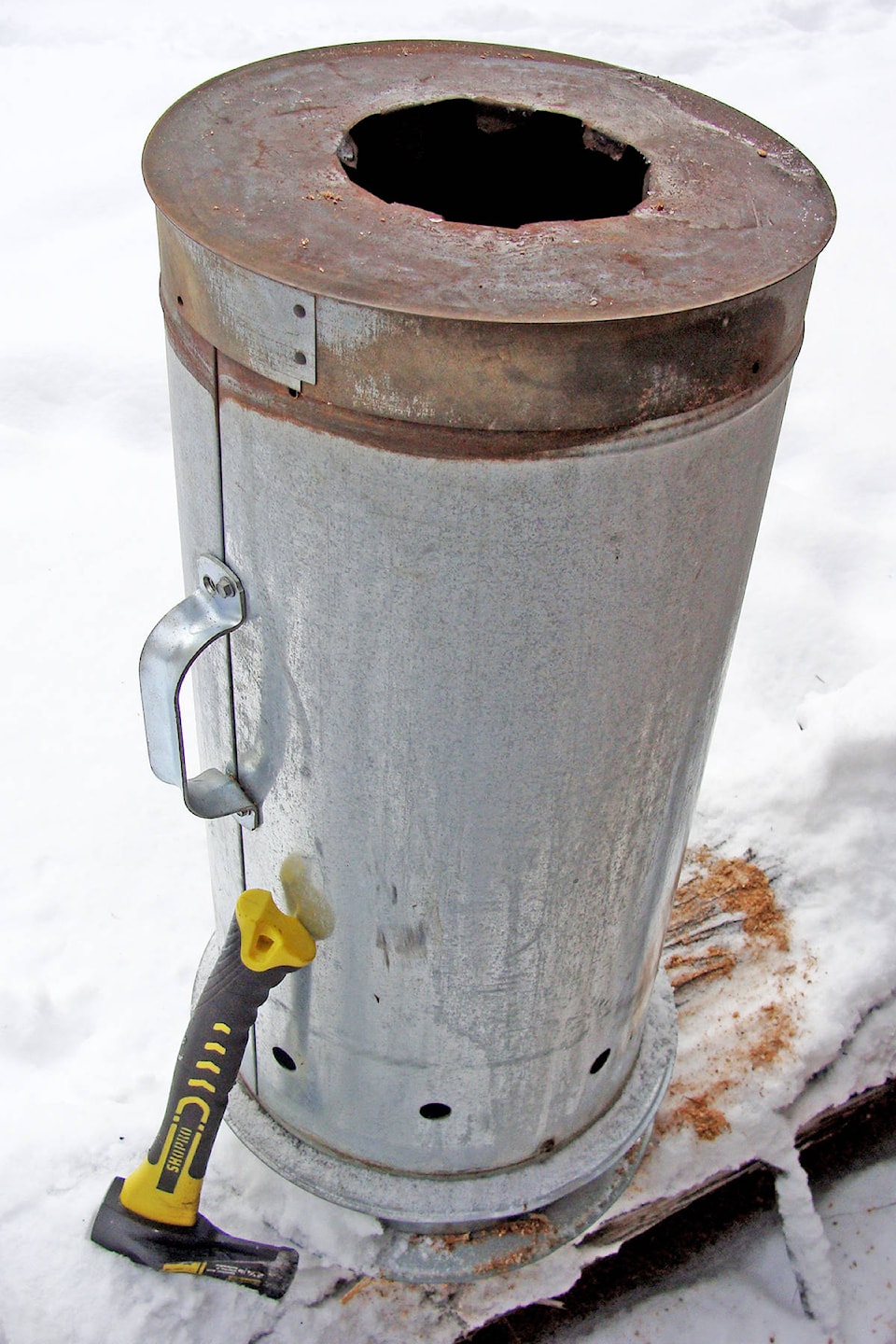The production and use of biochar from residual logging material would make more economic sense if there was a local market to demonstrate the various uses of this carbon product.
For those who may be interested in this topic, a good place to start is an article in the 2016 BC Organic Grower Journal by Marjorie Harris. She attributes a lot of the information to Zbigniew Wierzbicki of Elderberry Lane Farm who is a strong advocate for the appropriate on-farm use of biochar and its correct production techniques.
As Mr. Wierzbicki notes: “the fresh biochar must first be ‘activated’ by absorbing nutrients. Scattering a light layer of biochar on the barn floor will let it absorb the nutrients from the straw-manure litter while keeping the barn floor sweet and protecting livestock feet from diseases. Biochar can also be charged by soaking it for two to four weeks in any liquid nutrient (urine, plant tea, etc.). If the biochar is not properly activated before being applied to the soil it will absorb the available soil nutrients to fill its absorptive capacity, depleting the soil.”
Biochar could also be scattered on any paddock where domestic animals are concentrated for any length of time.
The animals hooves will gradually incorporated the biochar into the soil along with the natural urine and manure. It has also been used in trenches or earth mounds where its high absorption properties helps keep manure from contaminating streams or ground water. It would also be useful for mine reclamation projects by helping improve soil attributes as well as binding heavy metal contaminants.
Some research has shown biochar may be useful for larger animals. “According to Gerlach & Schmidt who quote a test performed by the Central Laboratory of German Pharmacists who compared commercially available activated charcoal with biochar found that cattle fed with biochar treated feed showed a number of positive outcomes which included: Generally improved health and appearance and improved vitality.”
There is lots of information on how to use lawn clippings, deciduous leaves and other compost for adding to biochar as well as time frames for the best inoculation results. For those wanting to experiment and don’t have access to local biochar sources you can go to AMAZON were a five pound bag will cost about $30.
READ MORE: Community forests have many advantages for rural communities
I also received some information on work being done on biochar in southwest Oregon thanks to Robert Gillett who is the editor of the International Biochar Initiative Newsletter.
The attached link describes the work being done in by a number of private land owners thanks to a Conservation Innovation Grant (CIG) funded by the Oregon USDA Natural Resources Conservation Service (NRCS). The goal of the project was to transform two types of farm waste: animal manure and woody debris, into a high-quality compost that will improve farm soils which will also improve pasture and crop production.”
Participating landowners designed their own kilns to suit the size of the biomass and the conditions on the farm. Even the local community college got involved. Students in the welding program at Umpqua Community College fabricated kilns for the project.
I have provided a pail of biochar to my daughter who is using it on the floor of her chicken house and there are some local organic farms experimenting with production and use of biochar.
The accompanied photo shows a small scale retort that can produce from five to 10 litres of bio char in one burn which takes about two hours.
Robert Gillett link: https://nrcs.maps.arcgis.com/apps/Cascade/index.html?appid=1ca4e544cf8b4e1fac1fcde6d0e26f91
Jim Hilton is a professional agrologist and forester who has lived and worked in the Cariboo Chilcotin for the past 40 years. Now retired, Hilton still volunteers his skills with local community forests organizations.
